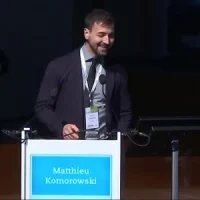At the 39th International Symposium on Intensive Care and Emergency Medicine, Professor V. Marco Ranieri, University of Bologna, discussed the SUPERNOVA trial and presented an overview on extracorporeal carbon dioxide removal (ECCO2R) as a supportive measure in superprotective lung ventilation.
Mechanical ventilation can cause a form of injury that is indistinguishable from acute respiratory distress syndrome (ARDS). ECCO2R can minimise the risk of acidosis by clearing CO2 and providing a lung protective effect.
Prof. Ranieri highlighted the fact that currently, the available data on the clinical use of CO2 removal in patients with ARDS is scarce. There is a need to understand the bigger picture. The SUPERNOVA multi-center, phase II international study was designed to assess, on a large scale, the feasibility and safety of the use of ECCO2R in ARDS patients.
95 patients across 23 study sites in Canada and Europe were included in this study. Study participants suffered from moderate ARDS and were expected to receive invasive mechanical ventilation for > 24 h. ECCO2R was maintained for five days. The devices that were used in the study included the Hemolung Respiratory Assist System (ALung Technologies, Pittsburgh, USA), the iLA activve (Novalung, Heilbronn, Germany) and the Cardiohelp® HLS 5.0 (Getinge Cardiopulmonary Care, Rastatt, Germany).
Findings from the study showed that the use of ECCO2R as a superprotective ventilation strategy was feasible and resulted in nearly 90% of the patients reaching the target without the problem of respiratory acidosis. However, as per the results presented by Prof. Ranieri, a significant number of side effects were observed. Six severe adverse events were reported; two of them (brain haemorrhage and pneumothorax) were attributed to ECCO2R. Overall, adverse events were reported in 39% of patients. 73% of patients were alive at day 28 and 62% of patients were alive at hospital discharge.
Adverse effects were mostly related to the technology, but none of them had any significant impact on the clinical management of the patients. However, they were still significant thus implying that the strategy might be feasible but may not be completely safe. Prof. Ranieri did observe that higher flow extraction devices were more effective with fewer technical problems. But keeping in mind the high number of adverse effects, it is clear that there is a need for additional clinical trials to assess if the benefits of ECCO2R outweigh the risks.
That is exactly what the SUPERNOVA 2 trial is set out to do, explains Prof. Ranieri. SUPERNOVA 2 will use data from the first SUPERNOVA study which will be used to determine the physiological criteria that would help select patients who have the highest chance of responding to this intervention. He explains that the issue is not the use of extracorporeal support, but the level of knowledge required by respiratory physiologists to implement a superprotective ventilation strategy.
The difference between SUPERNOVA and SUPERNOVA 2 is that SUPERNOVA 2 will select patients based on strict and validated physiological algorithms. Things should become more clear as to how we should proceed with the ECCO2R strategy in the future.
Source: Prof. Ranieri's presentation at #ISICEM19; Intensive Care Medicine
Image Credit: Sapienza University of Rome
References:
Combes A, Fanelli V, Pham T, Ranieri MV (2019) Feasibility and safety of extracorporeal CO2 removal to enhance protective ventilation in acute respiratory distress syndrome: the SUPERNOVA study. Intensive Care Medicine. doi.org/10.1007/s00134-019-05567-4
Latest Articles
ARDS, acute respiratory distress syndrome, ECCO2R, #ISICEM19, #ISICEM19 Brussels, Marco Ranieri, lung ventilation
Professor V. Marco Ranieri, University of Bologna, discussed the SUPERNOVA trial and presented an overview on extracorporeal carbon dioxide removal (ECCO2R) as a supportive measure in superprotective lung ventilation.










